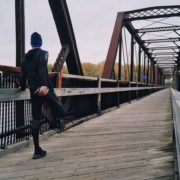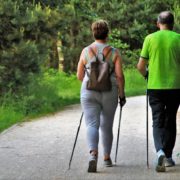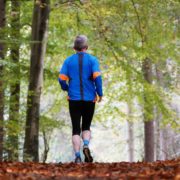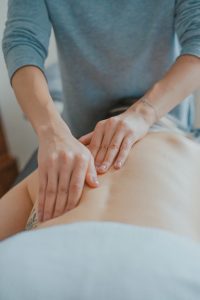Turns out – Running isn’t Bad for your Knees
Is Running Bad For Your Knees?
I love to play family-feud style trivia. And if there was ever a question – “Name an activity that is bad for your knees” – I know that running would be the number one answer.
But this is simply not true – and there is research to prove it.
There is a common myth that continued running will eventually cause, or accelerate arthritis in your joints. But in a 2013 study published in Medicine & Science in Sports & Exercise (the American College of Sports Medicine’s flagship journal) this theory was debunked. The results of the study concluded that runners were statistically less likely to develop knee and hip arthritis compared to other types of exercise. In a more recent study from 2020, published in PeerJ, it was found that although running does indeed create a lot more “pounding” in your knees compared to something like walking – this process actually helps to “build-up” your cartilage and make it stronger – which is a huge factor in helping to slow down arthritis.
But what about those that do get knee pain when they run? What’s the explanation?
Healthy running comes down to having optimized running form and body mechanics – otherwise it could become problematic for your knees.
So if you’re having knee pain when you run – instead of blaming the sport – consider one or more of the following:
Check your ankle mobility
Ankle mobility is going to influence the way force from the ground hits your foot, which can in turn impact how force (load) impacts your knee. According to Trail Runner Magazine, “if your ankle can’t move adequately, then excess forces are shifted up to the knee. The knee may be forced to flex, and/or rotate, and/or tilt more than it should. This may result in loads that the tissues of the knee can’t handle.” Everything from the types of shoes you were to old ankle sprains can all have an impact on how well your ankle moves. A specialist in movement and joint mechanics can help you test and improve your ankle mobility – and let you know if it’s impacting your knees when running.
Don’t just run – strength train too.
There’s a widely perpetuated myth out there that runners don’t need to strength train. That’s simply not true! Adding strength training to your running regimen makes it way less likely that you’ll suffer an injury. When it comes to protecting your knees, developing strong lower limb muscles is critical. The hamstrings and quadriceps play a crucial role in stabilizing the patella, otherwise known as the kneecap. Running is an extremely repetitive action and consequently requires durability and endurance from your joints — something that is lost quickly when you neglect strength training.
How’s your core?
It may seem like running is all in the legs, but in reality, so many of our physical actions stem from the core. You derive all your power, speed, and stamina from your core muscles, and if they are weak, all your joints suffer — including your knees. A stable core is key for maintaining balance and rhythm while running. It also keeps your weight distributed between your legs and prevents undue stress from resting on your knees. My favorite way to improve core strength is Pilates, especially for runners, because this exercise system gives your joints a nice break. But any core strengthening routine that focuses on using your body weight and minimizing stress on your joints is going to be beneficial for you if you’re a runner.
Practice good running form
It doesn’t matter if you’re a marathon runner or an occasional jogger — good running form is essential. It determines where and how the impact of every step is distributed throughout your body. But here’s the thing… Good running form is dependent on optimized joint mobility and strength – so simply changing your form might not be enough – and could even cause you more problems. You want to figure out why you’re running with a “bad” or inefficient form – correct what’s causing it – and then work to train your body to run in a more efficient way. This will not only help your knees – but all your other joints as well.
If you’re someone who loves to run and wants to keep running – I have good news for you – it’s not bad for your knees. But if you’re currently having knee pain while running – you’ll want to look at and consider one more of these strategies to figure out why. The best thing to do is enlist the help of an expert – such as a specialist physical therapist or movement expert – who can help you diagnose where your knee pain is coming from and get you on a path to fix it.
Dr. Carrie Jose, Physical Therapist and Pilates expert, owns CJ Physical Therapy & Pilates in Portsmouth and writes for Seacoast Media Group. To request a free copy of her Knee Pain Free Report CLICK HERE or to get in touch, email her at [email protected].












